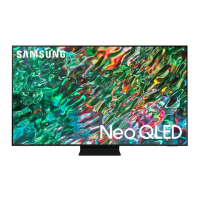
Do you have a question about the Samsung QN85QN90BDFXZA and is the answer not in the manual?
| Display Type | Neo QLED |
|---|---|
| Screen Size | 85 inches |
| HDR | Quantum HDR 32X |
| Processor | Neo Quantum Processor 4K |
| Smart TV Platform | Tizen |
| Audio Output | 60W |
| HDMI Ports | 4 |
| HDMI Version | 2.1 |
| USB Ports | 2 |
| Refresh Rate | 120Hz |
| Voice Assistant | Bixby, Alexa, Google Assistant |
| Speaker Output | 60W |
| Resolution | 3840 x 2160 (4K UHD) |
| Bluetooth | Bluetooth 5.2 |
Guides on connecting various external devices like video, game consoles, and PCs.
Instructions on how to connect a coaxial cable to the TV.
Steps to establish wired and wireless network connections for TV access.
Explains the buttons and functions of the Samsung Smart Remote for various TV models.
Details on using the universal remote feature to control connected devices.
Explains how to control external devices via HDMI-CEC using the TV remote.
Instructions for connecting and using keyboards, mice, and gamepads with the TV.
Accessing apps, games, movies, and other content via Smart Hub for a connected TV experience.
Setting the TV to display photos or content like time/weather when not in use.
Using the Art mode function to display artworks or photos, primarily for The Frame TVs.
Connecting controllers and playing games directly on the TV via Samsung Gaming Hub.
Accessing and reading the embedded manual for TV features and operations.
Surfing the internet on the TV using its built-in browser.
Connecting and controlling various devices within the same space via the SmartThings app.
Playing media content stored on USB devices, mobile devices, cameras, PCs, etc.
Viewing multiple content items simultaneously on the TV screen.
Interacting with Bixby using voice commands to control the TV.
Accessing and controlling game settings, monitoring, and enhancing game performance.
Viewing programming schedules, program information, and setting up channel viewing or recording.
Recording current or upcoming programs using a USB device instead of a video recorder.
Configuring the TV to show a specific channel or program at a specific time and date.
Watching missed scenes and rewinding to specific points of a program using Time Shift.
Changing channels or checking programs on other digital channels and managing favorites.
Allowing the TV to analyze surroundings and content for an optimized viewing experience.
Changing picture modes and adjusting advanced picture settings for optimal viewing.
Adjusting the displayed picture size and position on the TV screen.
Optimizing the TV for viewing specific video formats, especially for gaming.
Selecting sound modes and personalizing sound quality with advanced settings.
Configuring sound settings for the TV, including speaker selection and Bluetooth devices.
Setting the current time and using the timer functions for automatic TV operations.
Reducing TV energy consumption by adjusting power preferences and energy-saving options.
Adjusting settings to protect the TV screen, especially for OLED TVs.
Viewing software version and updating the TV's software via network or USB.
Configuring content or app security settings to restrict access based on parental guidance.
Configuring accessibility functions like Voice Guide, captions, and zoom for visually or hearing impaired users.
Changing settings for voice assistants like Bixby or Alexa to control the TV.
Accessing other TV functions like menu language, PIN setup, and usage mode.
Essential instructions and precautions before using recording and Timeshift features.
Important information and limitations regarding the use of TV applications.
Key information and restrictions before using the TV's internet browser.
Precautions and guidelines for setting up a wireless network connection for the TV.
Information and limitations regarding the use of photo, video, and music files on the TV.
Solutions for common problems related to TV picture quality and display.
Steps to resolve problems related to TV sound, volume, and unexpected noises.
Troubleshooting steps for problems with receiving broadcasts or finding channels.
Solutions for problems connecting external devices like PCs, game consoles, or mobile devices.
Steps to resolve wireless and wired network connection problems.
Troubleshooting steps for Anynet+ (HDMI-CEC) not working or connected devices not displaying.
Solutions for when the remote control is not working or external devices cannot be operated.
Steps to resolve issues with Timeshift or recording functions not working correctly.
Solutions for apps not working properly, language issues, or Smart Hub screen persistence.
Troubleshooting steps for media files that are interrupted during playback or cannot be played.
Resolving issues with voice assistants like microphone problems or incorrect responses.
Procedures to resolve other miscellaneous issues related to the TV product.
Using self-diagnosis tools like video/sound tests and factory resets for TV issues.
Steps to resolve issues when the TV screen is not displaying content correctly.
Troubleshooting steps for when the TV fails to power on.
Resolving distorted picture or sound issues related to the soundbar or external devices.
Steps to troubleshoot and resolve network connectivity problems on the TV.
Solutions for issues with no sound or unusual sounds coming from the TV speakers.
Troubleshooting steps for when the TV remote control is unresponsive or not functioning.
Instructions for updating the TV's software automatically or via a USB drive.
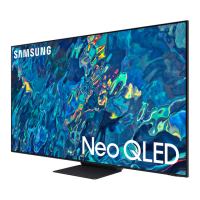
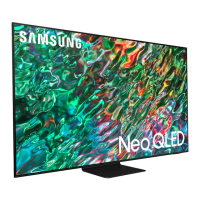
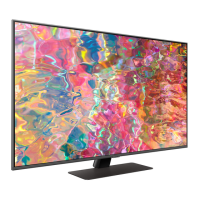

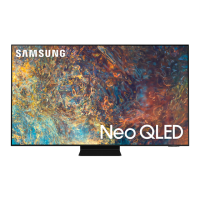
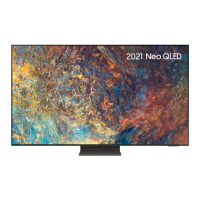



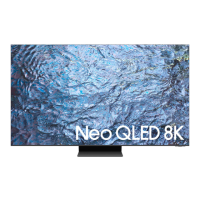

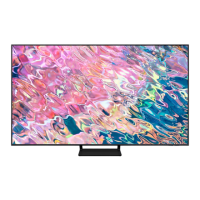
